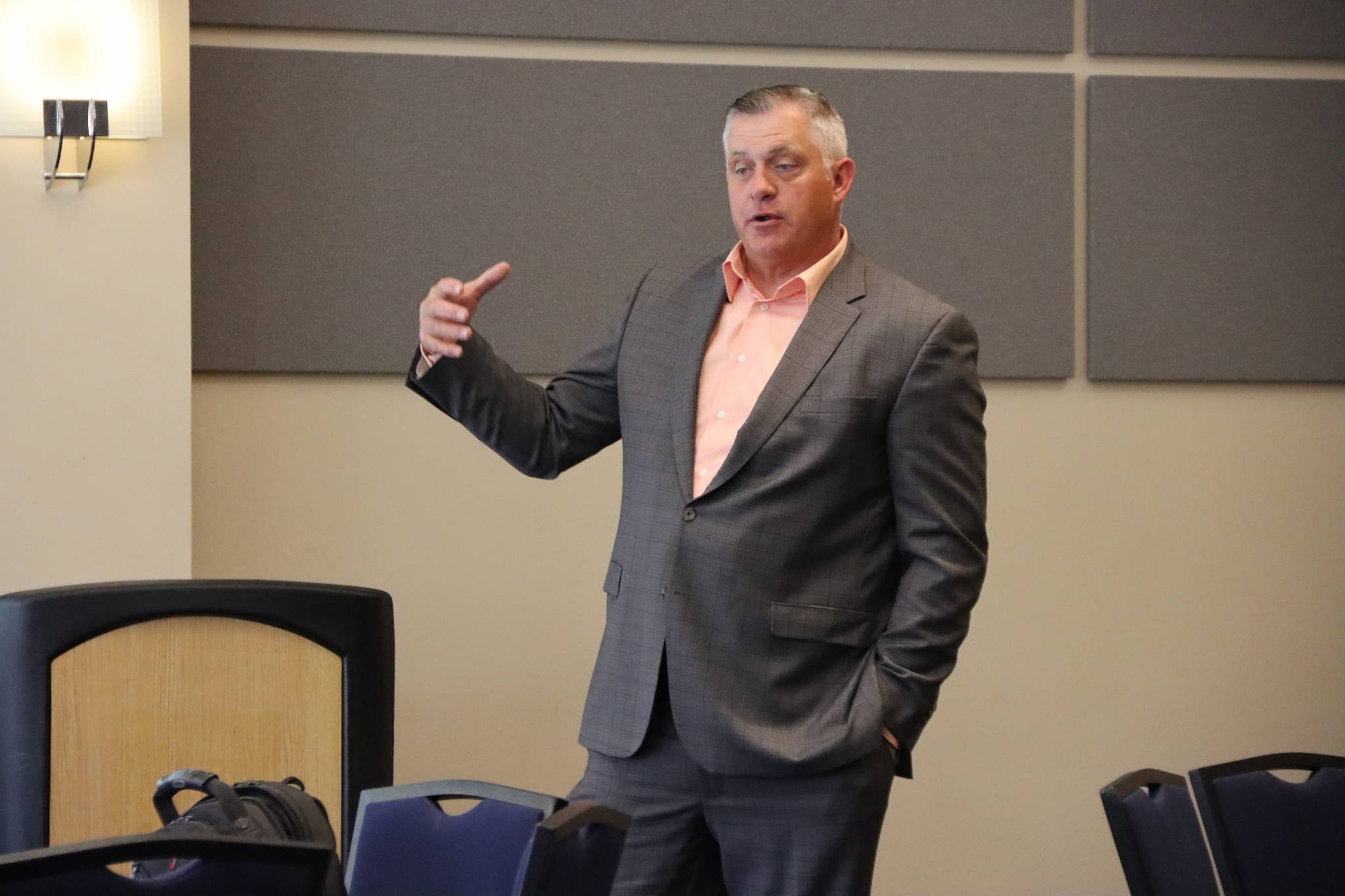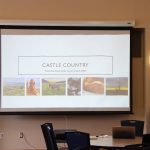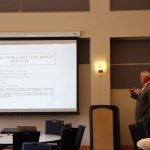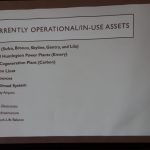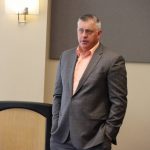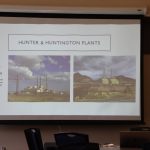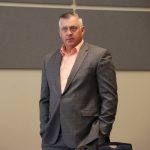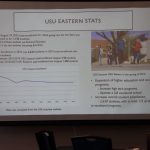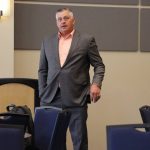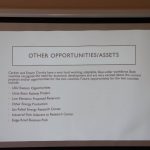Brock Johansen, CEO of Emery Telcom, was the speaker at this month’s Castle Country Business Expansion and Retention (BEAR) general board meeting. Johansen has been the CEO of Emery Telcom since 2005 and during his time as CEO, he has been able to grow and expand Emery Telcom to Carbon County, Salt Lake City, Denver, St. George and Grand Junction; just to name a few.
Johansen began the presentation with a story about sitting in a meeting where the presenters were talking about Carbon and Emery areas needing to put their focus into tourism, instead of utilizing the assets the two counties already have.
“Telcom is changing, telephone lines are going away. When I came on in ’05 I had said ‘well, okay, telephones going away to give way to a cellphone, so I’m gonna open up a bakery,’” joked Johansen.
Johansen continued to explain that instead of throwing away our assets such as coal and energy and replacing it with tourism; we need to put our focus on the assets we already have and make them better. Johansen continued to joke that he saw telephones lines disappearing but people were still using their phones and internet daily and at a more substantial rate. Johansen saw this as an opportunity to get ahead of the disappearing phone lines, and create a bigger and better network while expanding into Northern Utah; and he definitely didn’t “open a bakery”.
Johansen discussed a conversation he had with the Director of the Bureau of Land Management (BLM) Greg Sheehan about a project to get everyone organized in a way to keep us a baseline producer. Sheehan stated that it would take the BLM 25 years to get anyone else to commit to creating the transmission lines that we already have. The transmission lines that are leaving the Hunter Power Plant are the very biggest assets in the area. Johansen again stated, “We are not a bakery; we are a transmission line company.”
Johansen also discussed that Carbon and Emery Counties have so many great assets such as; existing rails, the Carbon County Airport, Emery Telcom, Intermountain Electronics and USU Eastern, along with the coal mines. How can these already-existing assets be leveraged, because these assets can’t be replaced with tourism alone?
Whereas coal and energy are the areas biggest assets, that’s where the focus need to be put.
“We need to figure out what we need to do to leverage our assets,” explained Johansen.
As of right now, Utah has some of the cleanest coal in the world, however Carbon and Emery Counties do not currently have access to a port that will allow export. If exporting and selling coal was available, the area would experience a huge boom. With the ports denying the export of coal, Savage and a few other companies attempted taking it into their own hands and purchased an old military port in Oakland, California. Unfortunately, they have been in legal battles for the last 10 years with environmentalist. Another option would be a port based out of Baja, Mexico, the only issue with that being an option there is quite a bit of rail missing that would make that a possible port for export.
Johansen explained the importance of being organized and getting ahead of things when it comes to greener, cleaner energy, stating, “If they want it to be green, let’s turn it green; let’s put a carbon capture on this.”
It was discussed that one of the biggest things that our area needs to be focusing on is Carbon Sequestration to nuclear. This process allows power plants to capture the smoke being produced, before it is emitted into the atmosphere. It is then froze until the carbon separates into dry ice, where it is then injected into a carbon well that is buried extremely deep underground. Carbon sequestration wells (Class VI Wells) are regulated by the Federal Government, and in order to obtain a Class VI Well, it would cost millions of dollars as well as over 10 years of permitting.
However, because the State of Utah understands the process it takes to obtain a Class VI well, legislation passed a law in 2022 allowing Utah’s Division of Oil Gas and Mining to take back Carbon Sequestration wells. Richard Powell, a program manager for the division, is currently in the process of filing all of the necessary documentation with the Environmental Protection Agency (EPA) to prove the local ability to do all of the necessary processes that the EPA is doing, only faster. Unfortunately, Powell has stated that he is still about six years out from being able to complete the process due to being understaffed. Once this process has been completed, it could potentially cut cost down to a 1/10th and fast track permitting to a year instead of 10. Due to Utah’s geological location, there are many favorable locations throughout the state.
Johansen then spoke about the shift being made to nuclear energy. With all of the massive solar plants being opened around the U.S., including Las Vegas and California, they’re still only responsible for providing 3% of the local power. Johansen explained that not only are these plants only providing 3% of the power, but that it is also extremely unreliable power. Due to solar being so unreliable, PacifiCorp has put a halt on all purchase of solar during their Integrated Resource Plan (IRP).
Johansen mentioned that if the transmission lines are not going to be used to haul coal energy, then what they will be utilized for must be figured out. Johansen also talked about the fact that the state of Wyoming has not only tested the Carbon Sequestration project, but also the nuclear project. The state of Wyoming organized and realized what their greatest assets were and understood that they “weren’t a bakery.”
Johansen explained that many think of the nuclear bombs and disasters that have happened in the past when thinking of nuclear power. Johansen explained that the previous explosions were basically steam/water bombs due to nuclear plants that have their water turbines to close to the nuclear reactors. With the new nuclear plants, the water turbines located much further away from the nuclear reactor. Systems have also been put into place to allow immediate shut off of nuclear transfer in case of emergency, and the nuclear reactors will be able to “self-cool” as Johansen explained.
In previous years, the blast radius for nuclear plants was 30 miles, but due to the changes that have been made, the blast radius is now to the fence that surrounds the nuclear plant. Johansen explained that once the nuclear projects that are currently underway have been completed, companies will be able to start placing plants in other areas once they are approved.
The last asset needing to be discussed was Utah State University Eastern (USUE), previously known as College of Eastern Utah. College of Eastern Utah became Utah State University Eastern in the Spring of 2010. Since becoming USU Eastern, enrollment rates have dropped drastically. Johansen pointed out that once USU Eastern took over, there were many vocational classes that stopped being offered. With the decrease in vocational classes came a decrease in the student population. Fortunately, legislators were able to allocate funding to USU Eastern to bring back vocational classes to the campus. Johansen explained the importance of bringing back vocational classes, but also the importance of implementing an I.T. program.
Johansen spoke of an interaction he had with a few I.T. guys who had come down to visit the Carbon and Emery County area. Johansen stated that while many of the guys had an amazing time exploring the outdoors, none of them stated that they would move here. Johansen discussed how one of the guys had told him that he needed to find people who grew up in this area. He explained that it is much easier to find someone who grew up here and has roots here to either stay here or to relocate back to our area.
He discussed that while visiting the area is a nice change, that ultimately its extremely difficult to convince someone who has grown up in a city environment to relocate to smaller rural community. Johansen advised that they have the fibers network and capabilities to employ local I.T. Technicians but they simply do not exist in our area due to the lack of an I.T. program at our local university. Johansen pointed out that because Emery Telcom is the leader in the fastest most reliable internet in the state, there are endless opportunities for individuals to have high-paying jobs that allow them to work from home.
Recent reports have stated that within the next few years the need for power is going to increase by four times. As a state, there is a need to recognize the future need for increased power and the assets that are held. Utah needs to get in front of that need, explained Johansen.
Johansen concluded his presentation by stating “You are not a bakery. You’re not Moab. You’re not arches,” Carbon and Emery counties have a bunch of coal, a bunch of transmission lines and a really good campus; Moab doesn’t have any of these things.

